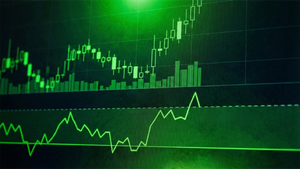The "Termite Control Market Size, Market Share, Application Analysis, Regional Outlook, Growth Trends, Key Players, Competitive Strategies and Forecasts, 2022 to 2030" report has been added to ResearchAndMarkets.com's offering.
The global market for termite control services is projected to grow at a CAGR of 6.5% during the forecast period of 2022 to 2030
This study report represents analysis of each segment from 2020 to 2030 considering 2021 as the base year. Compounded Annual Growth Rate (CAGR) for each of the respective segments estimated for the forecast period of 2022 to 2030.
Termites are pests that cause extensive damage to homes as well as businesses by feeding mostly on dead plants and wood, and they do their damage from the inside out. The application of numerous biological, chemical, mechanical, and physical techniques, in addition to pre-construction termite control, also known as soil treatment, is effectively driving the growth of the termite control service market.
Termite Control Measures Reduces the Level of Structural Damage
Both residential and commercial buildings might be at risk of being damaged by termites. Continued recommendations for effective termite control techniques are being made by the building industry, with the assistance of the government, in an effort to lower the costs and dangers that are connected with termite damage.
For instance, in order to reduce the likelihood of an infestation caused by termites, the Building Code of Australia mandates the construction of an efficient termite management system. Only main building elements are required to have some level of protection under the code. Intense research and development efforts have led to the creation of innovative solutions that are both cost-effective and cutting-edge.
Some examples of these solutions include pre-construction termite control, also known as soil treatment, and smart pest control techniques as an alternative to hand-spraying pesticides and insecticides. In addition, real estate developers are recommending to their clients that, in order to address the challenges that are associated with termite damage, they choose from a variety of solutions according to the suitability of their investments.
Companies are Focusing on Increasing Productivity to Raise Profitability
Labour is the most significant cost-intensive asset, therefore termite control service companies are adjusting their focus to enhance the productivity of their professionals. Termites are the most common type of wood-destroying pest.
A strong emphasis is being placed on the efficient scheduling and routing of work in order to permit more termite treatments each day. It is anticipated that this will result in an increase in income for companies that offer termite control services till around 20%.
Chemical Termite Control Methods Remained Dominant in 2021
Over 2,300 different species of termites can be found all over the world. The market for termite control has been segmented as subterranean termites, damp wood termites, dry wood termites, and additional species such as conehead termites and desert termites, based on the type of termite that needs to be eradicated.
As a result of their widespread distribution, subterranean termites currently hold the majority of the market share. Chemical, mechanical and physical, biological, and other approaches, which include environmental control services and radiation, make up the many submarkets that make up the termite control market.
These submarkets have been segmented based on the control method. The chemical segment was the most dominant taking over 57% of revenue share in 2021, and it is anticipated that insect growth regulators and various larvicides, such as diflubenzuron and noviflumuron, will acquire considerable market growth over the course of the next few years.
Along with attractants, several types of insect growth regulators (IGRs) such as anti-juvenile hormone agents are also utilised in the physical and mechanical control methods, such as termite bait systems and barriers. These IGRs are used to prevent the development of the next generation of the pest.
Commercial and Industrial Sector to Lead the Application Segment
The application market is segmented as commercial, industrial, residential, agricultural and livestocks and other. Commercial and Industrial sectors were the most dominant segment in the termite control market in 2021.
The stringent regulatory standards that must be met in order to satisfy the requirement of keeping the threat of termites under control are responsible for the significant demand that comes from the commercial and industrial sectors. Audits are obligatory for certifications such as ISO 9001 and ISO 22000 in commercial and industrial enterprises, particularly in the food service and pharmaceutical industries. Many governmental entities make this requirement.
Companies who do not comply with these rules risk incurring penalties and being shut down. These certifications include a required clause requiring termite control to be performed on a yearly, semi-annual, or quarterly basis. As a consequence of this, there is a growing need for termite control services all across the world.
Smart Approaches of Service Providers to Motivate Contract Based Termite Control Services
Service providers are increasingly embracing smart approaches to control termites that defy costly infestations using sustainable solutions. These strategies have the potential to reduce the environmental impact of controlling termites.
The provision of advantages such as intelligent, digital-process based constant monitoring, quick reactive steps, etc. that helps the detection of blind spots along with round-the-clock surveillance is expected to promote the market expansion in the near future.
It is anticipated that the shift toward contract-based termite control services, in conjunction with the utilisation of semiochemicals as an environmentally acceptable alternative to pesticides, will underpin the expansion of the termite control services market by one-fourth of the present demand. In addition, Internet of Things (IoT) and artificial intelligence (AI) technologies are now being integrated into termite control services.
North America Leading with 25% of Global Revenue Share
In 2021, the market for termite control products was led by North America, that contributed about 25% of global revenue share. The trend of rising home prices in North American real estate markets is now being observed. Because of this, there has been a rise in demand for termite treatment services in the area, as the majority of the homes are constructed out of wood.
In addition, market leaders in North America are currently involved in the process of releasing new goods and increasing their presence across the world in order to continue to maintain their position as market leaders. There are a number of factors that are anticipated to contribute to the expansion of the market.
One of these factors is the growing need for biological control methods and biotermiticides. In developed countries such as the United Kingdom, and Germany, these control applications are also required to be licenced and certified.
On the other hand, technicians in developing regions are typically unskilled labourers; as a result, the risks to both the technicians and their customers remain high. This is one of the most significant barriers that prevents people from adopting termite control treatments all around the world.
Market Saturated in Developed Company and Fragmented in Emerging Economies
The global market for termite control is extremely consolidated, with only a select few multinational corporations accounting for a significant portion of the industry in 2021. The market in industrialised countries is now considered to be saturated, and the majority of the demand is witnessed from emerging countries.
The important players that have been identified have a significant presence in the international market for termite control. The companies BASF SE (Germany), Syngenta AG (Switzerland), Dow Chemical Company (United States), Sumitomo Chemicals (Japan), and FMC Corporation (United States) are currently the key players in this market (US).
Key questions answered in this report
- What are the key micro and macro environmental factors that are impacting the growth of termite control market?
- What are the key investment pockets with respect to product segments and geographies currently and during the forecast period?
- Estimated forecast and market projections up to 2030.
- Which segment accounts for the fastest CAGR during the forecast period?
- Which market segment holds a larger market share and why?
- Are low and middle-income economies investing in the termite control market?
- Which is the largest regional market for termite control market?
- What are the market trends and dynamics in emerging markets such as Asia Pacific, Latin America, and Middle East & Africa?
- Which are the key trends driving termite control market growth?
- Who are the key competitors and what are their key strategies to enhance their market presence in the termite control market worldwide?
By Species (2020-2030; US$ Mn)
- Subterranean Termites
- Drywood Termites
- Dampwood Termites
- Others
By Control Mechanisms (2020-2030; US$ Mn)
- Chemical Control Methods
- Synthetic Pyrethroids
- Chlorinated Hydrocarbons
- Phenylpyrazole
- Chloronicotinyl
- Organophosphates
- Others
- Physical & Mechanical Control Methods
- Pitfall
- Termite Barriers
- Bait Technology
- Biological Control Methods
- Microbials
- Bacterial Control
- Fungal Control
- Botanicals
- Essential Oil
- Plant Extracts
- Leaf
- Root
- Fruits & Seed
- Wood Extract
- Resin
- Nematode Control
- Other Control Methods
By Application (2020-2030; US$ Mn)
- Commercial & Industrial
- Residential
- Agriculture & Livestock Farms
- Other Applications
By Services (2020-2030; US$ Mn)
- Contract Termite Control Services
- Ad-hoc Termite Control Services
Region Segment (2020-2030; US$ Mn)
- North America
- U.S.
- Canada
- Europe and UK
- UK
- Germany
- Spain
- Italy
- France
- RoE
- Asia Pacific
- China
- Japan
- India
- Australia
- South Korea
- RoAPAC
- Latin America
- Brazil
- Mexico
- RoLATAM
- Africa
- GCC
- Africa
- RoME
Global Impact of Covid-19 Segment (2020-2021; US$ Mn )
- Pre Covid-19 situation
- Post Covid-19 situation
Company Profiles
- BASF SE (Germany)
- Syngenta AG (Switzerland)
- Dow Chemical Company (United States)
- Sumitomo Chemicals (Japan)
- FMC Corporation (United States)
For more information about this report visit https://www.researchandmarkets.com/r/cah9ye
View source version on businesswire.com: https://www.businesswire.com/news/home/20220810005379/en/
Contacts
ResearchAndMarkets.com
Laura Wood, Senior Press Manager
press@researchandmarkets.com
For E.S.T Office Hours Call 1-917-300-0470
For U.S./CAN Toll Free Call 1-800-526-8630
For GMT Office Hours Call +353-1-416-8900





